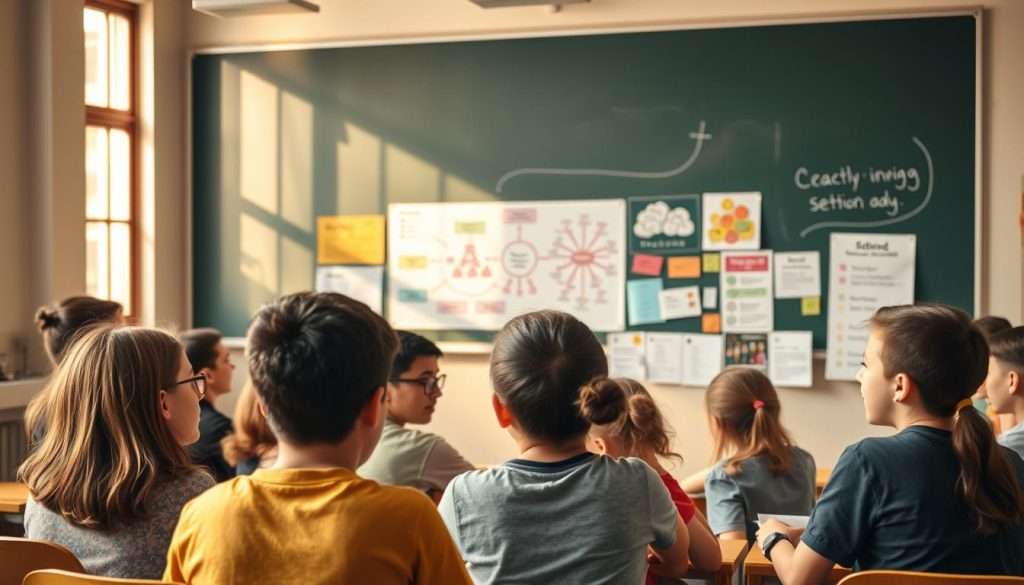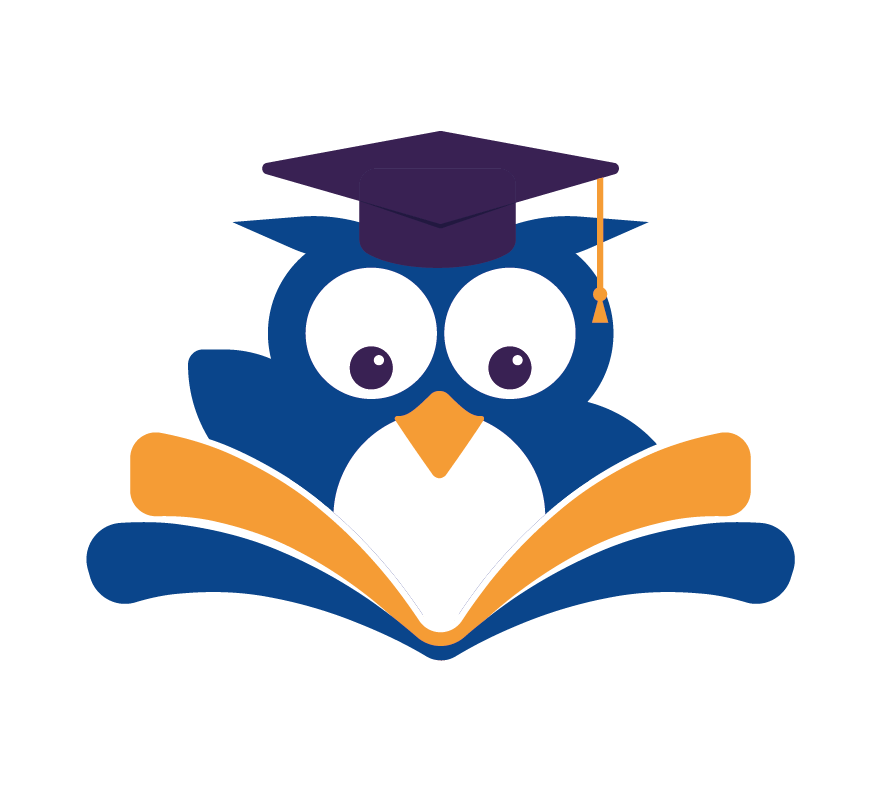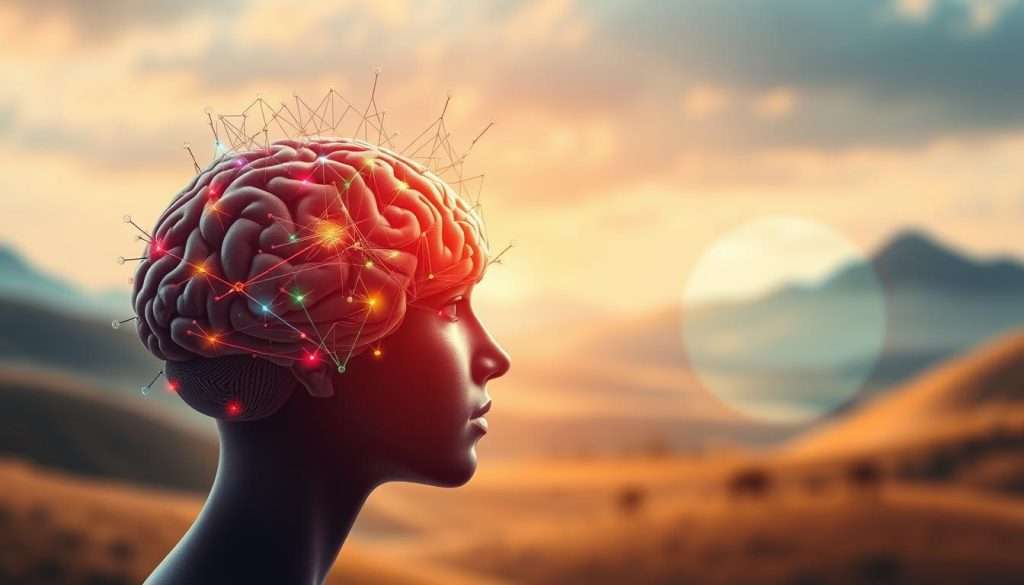Ever thought about how your brain changes when you learn something new? It’s really cool! Our brains are designed to grow and change, thanks to something called neuroplasticity. When we learn, our brain actually changes, making new connections between cells.
This cognitive learning process is what lets us learn, and it goes on forever. As we live, we meet new things, face challenges, and get new info. Our brains keep changing. By knowing effective learning strategies, you can reach your brain’s full potential and get the most out of learning.
Key Takeaways
- Our brains change physically when we learn new things due to neuroplasticity.
- The cognitive learning process is a lifelong journey.
- Understanding effective learning strategies can unlock your brain’s potential.
- Learning is an adaptive process that creates new connections between brain cells.
- Embracing lifelong learning can lead to personal growth and development.
The Science of How Learning Works
Our brains can change and grow a lot throughout our lives. This is thanks to neuroplasticity. It’s the brain’s ability to make new connections as we live.
Neuroplasticity and Brain Development
Neuroplasticity is key for learning. It’s about how neurons connect and change. When we learn something new, our brain makes new paths.
How Neural Connections Form During Learning
When we learn something new, our brain makes new connections. This is how we remember things. Repetition and practice help make these connections stronger.
Brain Adaptability Throughout Life
The brain keeps adapting as we age. We can keep learning and growing at any time. We just need to keep challenging ourselves and trying new things.
Donald Hebb, a neuroscientist, said, “Neurons that fire together, wire together.” This shows how important it is to be active in learning.
| Aspect of Neuroplasticity | Description | Impact on Learning |
|---|---|---|
| Synaptic Pruning | Elimination of weak neural connections | Improves efficiency of neural pathways |
| Synaptic Potentiation | Strengthening of neural connections | Enhances memory and learning |
| Neurogenesis | Growth of new neurons | Increases brain’s capacity for learning |
Understanding the Cognitive Learning Process
Let’s explore the world of cognitive learning and how our brains handle information. The process involves several stages that help us learn and remember new things.
Attention and Perception
The learning journey starts with attention and perception. We can’t learn without focusing. Our perception shapes what we see and hear. “The art of perception is to perceive what is invisible.” This shows how crucial it is to notice and focus on what’s important.
Encoding Information
After we notice information, our brains must encode it meaningfully. This means linking new info to what we already know. Good encoding turns data into useful knowledge.
Storage and Retrieval
Information is then stored in our memory. There are two main types: short-term and long-term.
Short-term vs. Long-term Storage
Short-term storage holds info briefly, lasting just a few seconds. On the other hand, long-term storage keeps info for a long time. To move info from short-term to long-term, we must rehearse or repeat it.
Effective Retrieval Methods
Getting information from memory is as vital as storing it. Methods like spaced repetition and retrieval practice help us remember better.
Understanding how we learn helps us improve our learning methods. It’s not just about taking in info. It’s about making sure our brains process it efficiently.
The Four Stages of Competence in Learning
Learning is a journey with four key stages. These stages help us move from not knowing to becoming experts. This model is key in educational psychology, guiding both learners and teachers.
Unconscious Incompetence
The first stage is unconscious incompetence. We don’t know we don’t know something. For example, you might not know how to play a musical instrument and not realize it. This stage is about not knowing what you don’t know.
Conscious Incompetence
Then comes conscious incompetence. Here, we know we don’t know something. Seeing a professional play an instrument might inspire you to learn. But it also shows you how much you don’t know.
Conscious Competence
The next stage is conscious competence. We’ve learned something but still need to practice. For example, you can play an instrument, but you have to think about each step. This stage needs a lot of practice and focus.
Unconscious Competence
Lastly, we reach unconscious competence. At this stage, what we’ve learned becomes automatic. You can play an instrument without thinking, allowing you to improve other skills. Remember, “Practice makes perfect,” and this is where you see that perfection.
Knowing these stages can make learning better. It helps us be more patient and persistent. By understanding where we are, we can learn more effectively.
Memory Systems and Knowledge Retention
Memory is key to learning, and knowing how it works can help us remember better. Our brains have complex systems for storing information.
Working Memory vs. Long-term Memory
We have two main memory systems: working memory and long-term memory. Working memory is like a mental sticky note for temporary info. It has a small capacity and doesn’t last long. Long-term memory, on the other hand, is huge and keeps info for a long time. The goal is to move info from working memory to long-term memory for better learning.
The Forgetting Curve and How to Combat It
The forgetting curve shows how our memory fades over time. “If you don’t review material, you’ll forget most of it within a few days.” It highlights how retention drops unless we recall info. To fight this, spaced repetition helps by reviewing material at longer intervals to solidify it in long-term memory.

Techniques for Enhanced Memory Retention
There are many ways to boost memory retention. Two top methods are active recall and mnemonic devices.
Active Recall Strategies
Active recall means actively pulling info from memory instead of just reading it. You can test yourself, summarize in your words, or use flashcards.
Mnemonic Devices and Memory Palaces
Mnemonic devices are tools to make info more memorable. Think of acronyms or rhymes. A memory palace is a technique where you imagine a place and link info to it.
By grasping how memory works and using these methods, we can greatly improve our ability to hold onto knowledge.
Learning Styles: Myth vs. Reality
Have you heard you’re a visual, auditory, or kinesthetic learner? But is it true? The idea of learning styles has been around for a while. Let’s look at the VARK model, a well-known one.
The Popular VARK Model
The VARK model, made by Neil Fleming, sorts learners into four types: Visual, Auditory, Reading/Writing, and Kinesthetic. It says each person has a best way to learn. The VARK model is big in education, helping teachers and students understand learning styles.
Scientific Evidence on Learning Preferences
Even though it’s popular, scientists are still unsure about the VARK model and learning styles. Studies show learners might have favorites, but it’s not clear if it helps them learn better. A study in “Psychological Science in the Public Interest” found no solid proof for learning styles.
| Learning Style | Description | Preferred Learning Methods |
|---|---|---|
| Visual | Learners who prefer using images and visual aids | Diagrams, charts, videos |
| Auditory | Learners who prefer listening to information | Lectures, discussions, audiobooks |
| Kinesthetic | Learners who prefer hands-on experiences | Experiments, practical exercises, role-playing |
Multimodal Learning Approaches
Now, many teachers suggest using multimodal learning. This method uses different teaching ways to reach all learners. It believes that mixing visual, auditory, and kinesthetic methods helps everyone learn better.
By using multimodal learning, we can make learning spaces more welcoming and effective. It meets the needs of all learners.
Effective Learning Strategies Based on Cognitive Science
Cognitive science has changed how we learn, offering strategies that really work. These methods make studying more efficient and effective. Let’s explore some of the most powerful techniques backed by science.
Spaced Repetition
Spaced repetition means reviewing material at longer intervals to lock it in your memory. It uses the psychological spacing effect, showing that spaced learning is better than cramming. Use flashcards or apps to make spaced repetition a part of your study routine.
Retrieval Practice
Retrieval practice is recalling information without looking at your notes. It strengthens your memory and recall. Try practice quizzes or tests to reinforce your learning. The more you practice, the better you’ll remember.

Interleaving
Interleaving means switching between different material or problems. It helps you understand and apply different concepts. Instead of focusing on one topic, mix different subjects to deepen your understanding.
Elaboration and Dual Coding
Elaboration connects new information to what you already know, making it stick. Dual coding uses both visual and auditory learning. For example, watch a video and then summarize it in your own words. This combination boosts your learning.
| Learning Strategy | Description | Benefits |
|---|---|---|
| Spaced Repetition | Review material at increasing intervals | Improves long-term retention |
| Retrieval Practice | Recall information without resources | Strengthens memory recall |
| Interleaving | Switch between different material | Deepens understanding, improves application |
| Elaboration and Dual Coding | Connect new info to existing knowledge, use multiple senses | Enhances memorability and comprehension |
Creating an Optimal Learning Environment
Let’s dive into making a study space that boosts your productivity! The place where you study greatly affects your learning. A well-thought-out study area can help you stay focused, motivated, and improve your grades.
Physical Environment Considerations
Your study area’s surroundings are key to learning well. Things like lighting, sound, and temperature can either help or hinder your focus.
Lighting, Sound, and Temperature
Good lighting reduces eye strain and helps you concentrate. A quiet spot or background noise at a good level can also help. Plus, keeping the temperature just right is important, as extreme temps can be a distraction.
Ergonomics and Comfort
Having a study space that’s ergonomically set up is vital. A comfy chair, a monitor at the right height, and a tidy desk help you stay focused and productive.
Digital Learning Spaces
In today’s world, your online study space is just as crucial as your physical one. Digital learning spaces should be neat and free from distractions. Use tools and software to help you stay on track and manage your digital stuff well.
Managing Distractions and Focus
As Cal Newport, a top productivity expert, said,
“The key to developing deep work habits is to embrace boredom and train your brain to focus.”
It’s important to cut down on distractions. Try turning off notifications, using website blockers, and setting aside specific times for studying. These steps can really boost your focus.
By improving both your physical and digital study areas, you can make a space that boosts productivity and improves your learning.
The Role of Motivation and Emotion in Learning
Emotion and motivation play big roles in how well you learn and remember new stuff. Knowing how they affect your learning can help you study better. It can also make your school time more enjoyable.
Intrinsic vs. Extrinsic Motivation
Motivation can come from inside (intrinsic) or outside (extrinsic). Intrinsic motivation is usually more lasting and makes you really get into the material. For example, wanting to learn a new language because you love the culture is a good example.
The Impact of Stress and Anxiety
Stress and anxiety can really mess with your learning. Too much stress can mess up your memory and make it hard to focus. It’s key to manage stress with things like mindfulness or exercise to keep your learning space right.
Building Positive Learning Mindsets
Having a positive attitude towards learning can boost your motivation and learning experience. This means having a growth mindset and being resilient.
Growth Mindset vs. Fixed Mindset
A growth mindset is believing you can get better with hard work and dedication. This is different from a fixed mindset, which thinks abilities are set from the start. Having a growth mindset makes you more ready to face challenges.
Developing Learning Resilience
Being resilient is key to getting past learning hurdles. Ways to build resilience include setting achievable goals, being kind to yourself, and asking for help when you need it.
| Characteristics | Growth Mindset | Fixed Mindset |
|---|---|---|
| Belief about Intelligence | Malleable, can be developed | Fixed, innate |
| Response to Challenges | Embraces challenges as opportunities | Avoids challenges to prevent failure |
| Feedback Reception | Seeks and uses feedback for improvement | May ignore or become defensive with feedback |
Transforming Study Habits for Lifelong Learning
Good study habits are key to learning and growing. To keep learning, we need to change how we study.
From Cramming to Consistent Practice
Cramming might help you pass exams, but it’s not good for long-term learning. A better way is to study regularly. This makes learning a habit.
By setting aside time each day, you can learn better. It helps you remember things longer.
Setting Effective Learning Goals
Having clear goals is important for learning. It helps you know what to do next. Break big goals into smaller ones to stay on track.
Metacognition and Self-Regulation
Thinking about how you think is powerful. It helps you learn better. Knowing your learning style lets you improve it.
Self-regulation means controlling your study space. It helps you focus better. This makes studying more effective.
Let’s look at how these methods compare:
| Study Habit | Cramming | Consistent Practice |
|---|---|---|
| Frequency | Infrequent, last-minute | Regular, daily |
| Retention | Poor, short-term | Good, long-term |
| Stress Level | High | Low |
Benjamin Franklin said, “Knowledge is the best investment.” Changing your study habits is investing in your future.
Conclusion: Applying Learning Science in Your Life
We’ve looked into the science of learning. Now, it’s time to use what we’ve learned. By using learning science, you can learn better and reach your goals faster.
Strategies like spaced repetition and retrieval practice can really help. Adding these to your daily routine makes learning more effective. You’ll also remember things better.
Remember, learning isn’t just about knowing stuff. It’s about using what you learn in real ways. This makes studying more fun and rewarding.
So, start using these learning strategies today. Watch how your learning skills improve!

